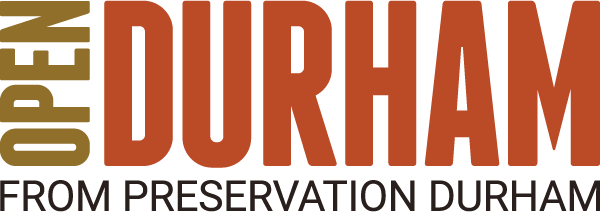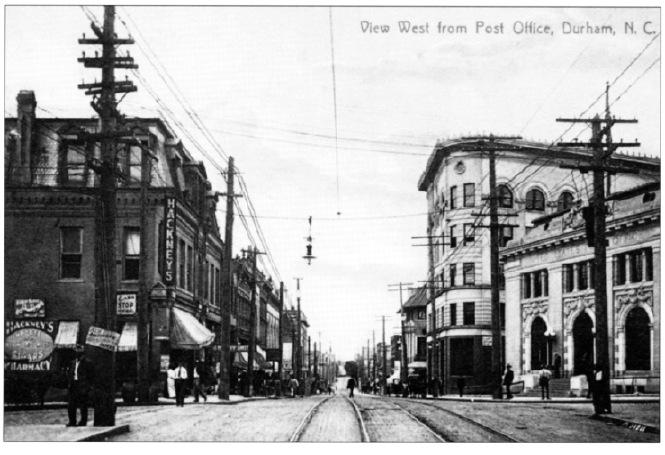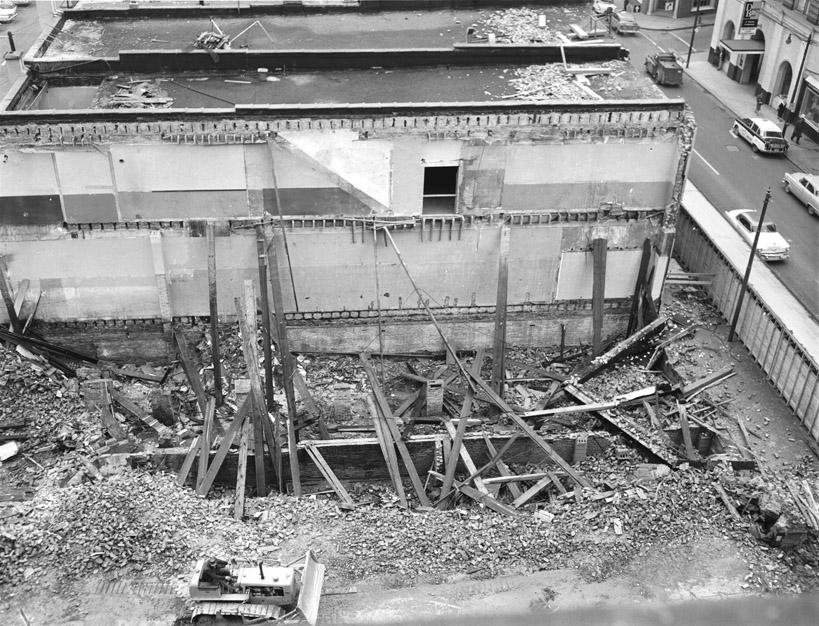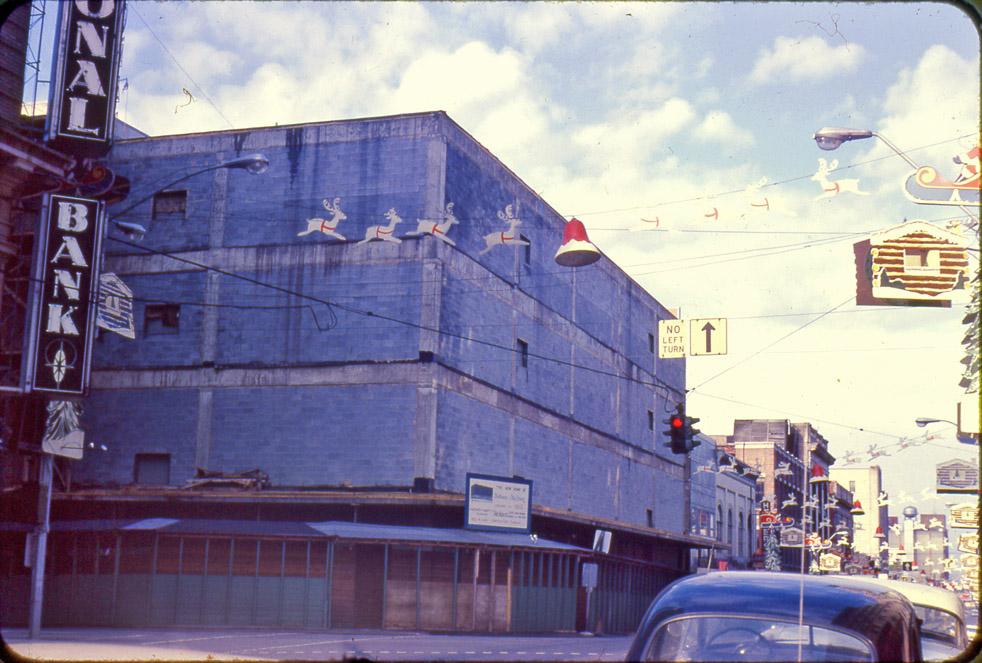Looking south/southwest, 1905 The first major building on this corner was the Wright Building, a three-story structure with a mansard roof and dormer windows. The building was built by
Richard H. Wright in the late 1880s. Wright moved to Durham and opened his own tobacco factory on West Main St., just to the east of the later Duke and Sons factory. Wright became a partner in W. Duke, Sons, acting primarily as salesman for the Dukes and travelled internationally on their behalf. Wright and the Dukes had a falling out, and spent several years in litigation over his departure, and his leveraging of his ties through W. Duke and Sons to the Bonsack Machine (which rolled cigarettes.) Wright would take on a multitude of additional endeavors including the Durham Light and Traction Company, the Wright Machinery Company, and real estate development through the Durham Consolidated Land and Trust Company. His offices, which included the offices of all of the aforementioned companies, were located here, in the Wright Building. Fidelity Bank, a concern of the Dukes and George Watts (as well as MA Angier) was originally housed in this structure before moving to the new Geer Building in 1915. At the time of this picture, the first floor housed Matthew's Pharmacy and an insurance broker. Matthew's was soon supplanted by Hackney Pharmacy.
Looking west, Hackney Pharmacy building on the left. Old post office is on the right, Trust building on right, next to post office, is still standing, as is the Temple Building, next to that. (Courtesy Durham County Library)
(Courtesy Durham County Library)
The facade of this building was significantly remodeled by, what I'm guessing is the late 1910s, given the presence of horses and no cars. The dormers and mansard roof remained on the Corcoran St. side, however.
(Courtesy Durham County Library)
A view looking southeast, probably from the 1920s. which gives another partial view of the original lower facade, along with the Geer building on the left and the First National Bank building (still standing) on the right.)
(Courtesy Durham County Library)
Looking southeast from the Washington Duke building, late 1920s. The absolutely bizarre little building to the west (right) of the Wright Corner is visible as well. (Courtesy Duke Archives) Stein's clothes in the first floor retail space during the late 1930s and 1940s.
(Courtesy Duke Archives)
During construction of the Hill Building, 1937 (Courtesy The Herald-Sun) The Croft Business School was located here (on the upper floors) from 1936 to the 1960s. Notice the original mansard roof and dormers on the Corcoran Street side.
From "Images of America: Durham" by Steve Massengill The modernization trend that struck in the 1950s (previously demonstrated in my post about the building on the northwest corner of Five Points) hit this building as shown in this 1957 picture - the third floor is being removed from the building.
(Courtesy Duke Archives)
But changing the architecture did not effect economic change. By 1961, "The Wee Shop" was going out of business, and the building was not long for this world.
The buildings being demolished, 1961 (Courtesy Duke Archives)
02.07.61
02.07.61
The buildings being demolished, 1961 Ellis-Stone Department store moved into the new building here in 1961 (they had been located in the ground floor of the CCB building). Ellis-Stone was either bought out or replaced by Thalheimer's.
(Courtesy Durham County Library) Thalheimers didn't last long - about 10 years - before abandoning downtown completely for Malltopia. Wachovia decided to abandon the Geer building and remodel this building in an even more severe style around 1972. I consider this type of architecture the worst of modernism; for some reason banks seemed to be the worst offenders. Repeat after me: natural light bad. Windows bad.
(Courtesy Durham County Library) The Self-Help Credit union bought this building in (I believe) the late 90s, and remodeled the exterior in 2002. Given what they started with, it was definitely lemonade from lemons.
~2003
01.22.11
























Comments
Submitted by NCMC (not verified) on Thu, 10/5/2006 - 2:49pm
Richard Wright was, briefly, a parter in W. Duke, Sons & Co. after moving from Oxford to open his own tobacco factory. Wright was primarily a salesman for the Dukes and travelled internationally on their behalf. He eventually left Duke to pursue his own busiess interests, including being the largest broker of Bonsack machines. Wright maintained real estate investments in Durham throughout his life, and among other thigs, contributed to the development of the city's early public transportation systems.
Submitted by Sven (not verified) on Thu, 10/5/2006 - 5:50pm
NCMC
Thank you so much for the information - I am going to add it to the main post. Do you know specifically if he built the first building featured? (With Hackney's pharmacy).
Add new comment
Log in or register to post comments.